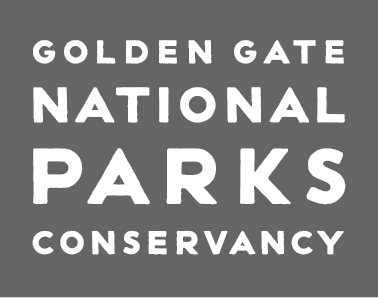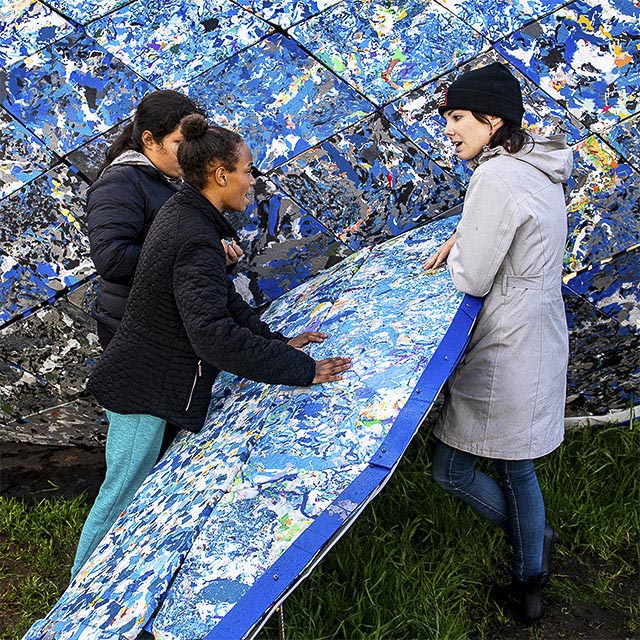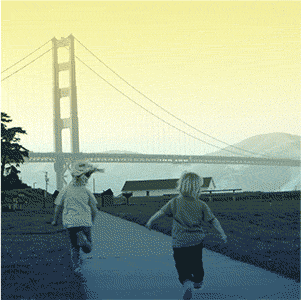What Happens When You Make Space ‘For All’? Wonder
Nearly 20 years ago, working with our partners, the community, and the Evelyn and Walter Haas, Jr. Fund, together we helped transform Crissy Field from a concrete parking lot into a beloved San Francisco park.
The change was staggering. More than 3,000 volunteers helped completely overhaul the former military land, from the greening of the former concrete airfield to the cleanup of East Beach and the restoration of Crissy Marsh.
Today, Crissy Field is a truly democratic open space with more than 1 million visitors annually.
“In many ways, the reality of Crissy Field has surpassed our dreams,” said Ira Hirschfield, President Emeritus of the Evelyn and Walter Haas, Jr. Fund. “We wanted Crissy Field to be a bridge that would connect people to their natural surroundings—and to each other.”
Those connections were made all over Crissy Field in 2018, thanks to the vision of the Evelyn and Walter Haas, Jr. Fund, and the work of the National Park Service, the Presidio Trust, and the Golden Gate National Parks Conservancy.
In August, the organizations hosted 32 young people at Crissy Field for a moving naturalization ceremony in the shadow of the Golden Gate Bridge. San Francisco author Dave Eggers told the young immigrants “this country’s greatness depends on you,” as a StoryWalkⓇ featuring his book “Her Right Foot” engaged young visitors nearby.
Crissy Field today is a truly democratic space that hosted a citizenship ceremony and StoryWalk in 2018. Video
“The naturalization ceremony and the StoryWalk leading almost to the front door of the Crissy Field Center highlight our commitment to youth, a key mission of the Conservancy’s ‘For All’ programs,” said Katherine Toy, Executive Vice President, Partnerships and Programs for the Conservancy.
Young people from around the region come to the Crissy Field Center to find their voice through leadership programs. They might discover VoiceOver, where middle schoolers create media about their life experiences, or Linking Individuals to Their Natural Communities (LINC), where high schoolers spend the summer stewarding and backpacking across the parklands. Almost 17,000 participants came through the Center in 2018, utilizing Crissy Field and our national parks as their platform for learning, leadership development, and fun.
On the other end of Crissy Field, kids and adults alike discovered a new visitor in 2018: The Monterey Bay Aquarium’s life-sized Blue Whale art exhibit. Placed near the promenade, the giant sculpture was made entirely from recycled plastic collected in California. Signs urged passersby to consider that every nine minutes, 300,000 pounds of plastic (the size of a full-grown blue whale) ends up in the ocean.
The transformation of Crissy Field makes the space a perfect spot to consider issues like ocean pollution. The Crissy Marsh is a shining example of what can happen when habitats are returned to their original state. Nearly 20 years ago, 230,000 cubic yards of soil was removed and the marsh restored to its original glory. Today, the marsh is home to egrets, heron, crabs, fish, and more than 50 species of plants and animals.
Crissy Field has become a space to find inspiration, beauty, and community.
“In today’s challenging world, and at a time when people can be divided on so many issues, it’s important to have places where we can go to connect with others, appreciate nature, or just unwind,” said Cathy Cha, President of the Evelyn and Walter Haas, Jr. Fund. “When you go to Crissy Field and you see the mix of people there, and you share with them this amazing opportunity to look out on the beauty of the bay and the Golden Gate Bridge, you remember you’re part of something bigger than yourself.
“Our Bay Area community is stronger, better, and more beautiful because of Crissy Field and when we embrace ‘parks for all.’”


